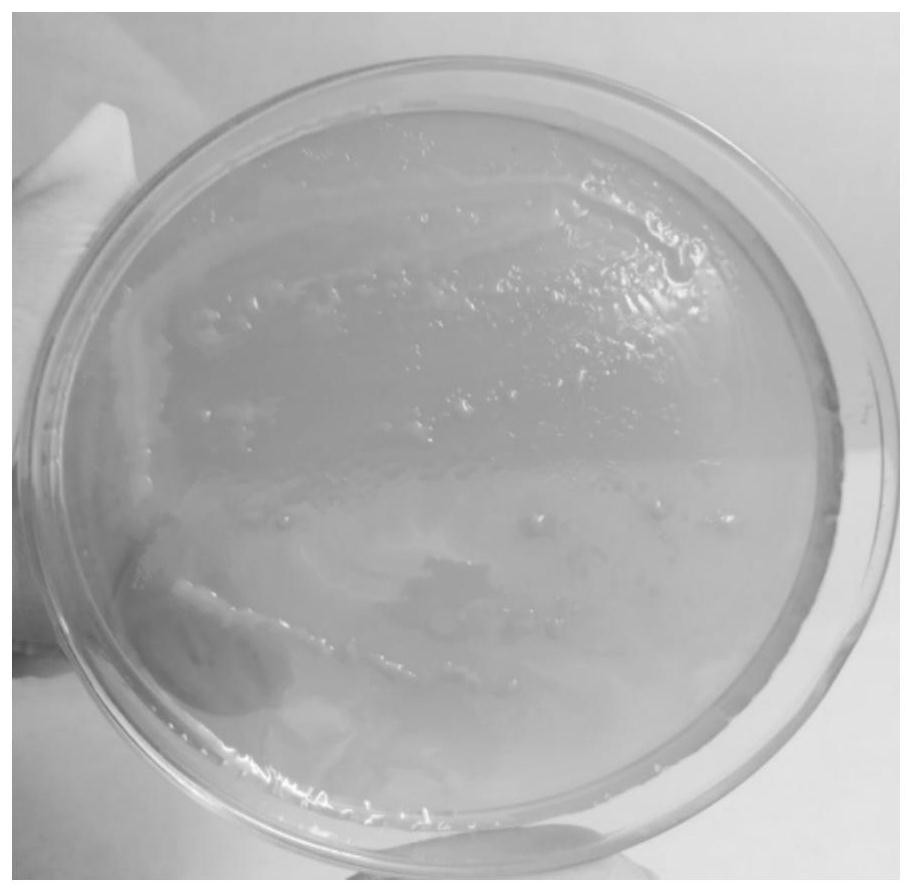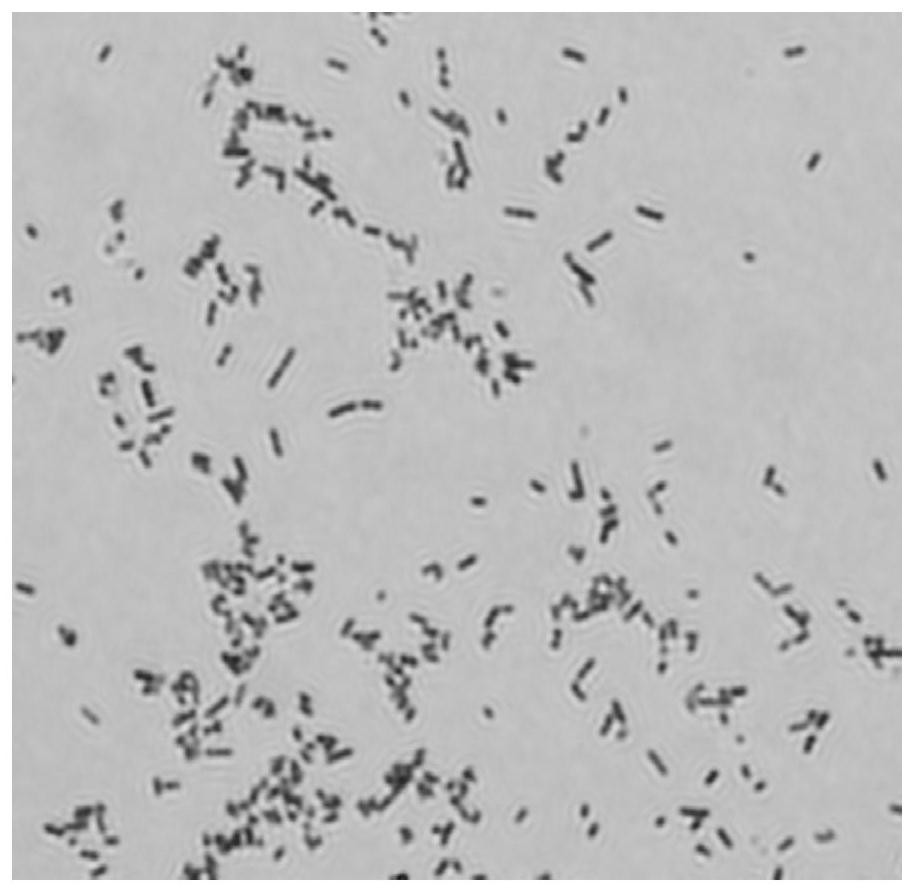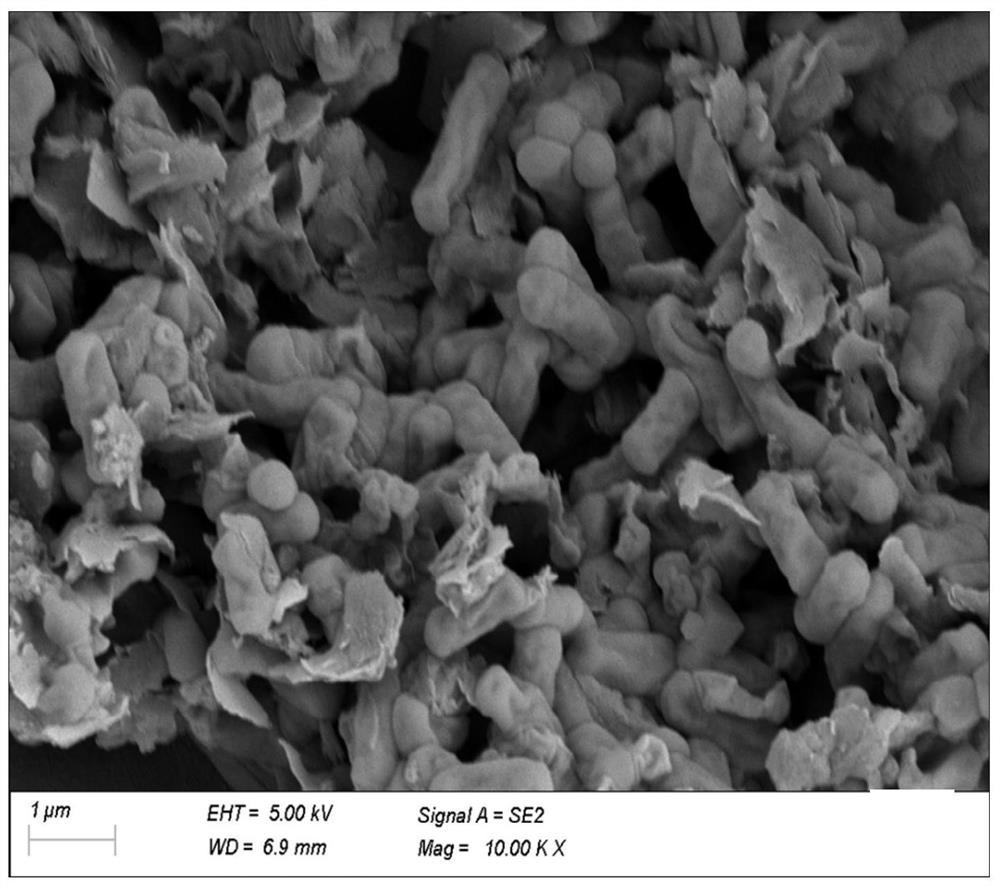Proteus for reducing fe(iii) in clay minerals and its application to inhibit clay swelling
A proteobacteria and clay technology, applied in microorganism-based methods, bacteria, microorganisms, etc., can solve the problems of inability to utilize organic matter, narrow utilization of electron donors, low reduction rate, etc. Yield, the effect of improving pore seepage
- Summary
- Abstract
- Description
- Claims
- Application Information
AI Technical Summary
Problems solved by technology
Method used
Image
Examples
Embodiment 1
[0051] Example 1. Screening, domestication, isolation and identification of the Fe(III)-reducing functional bacterium CA128 of the present invention
[0052] 1. Isolation, screening and domestication of Fe(III)-reducing fungus CA128
[0053] Screening and domestication method of Fe(III)-reducing bacteria CA128: according to the improved enrichment medium for iron-reducing bacteria (C 6 h 12 o 6 ·H 2 O 10g / L; NH 4 Cl 1.0g / L; KH 2 PO 4 0.27g / L; CaCl 2 0.05g / L; NaHCO 3 0.25g / L; FeCl 3 ·6H 2 O 9.6g / L; pH=7.0-7.2) formula preparation medium.
[0054] The experimental steps are as follows:
[0055] (1) Pack the prepared culture medium into 100mL facultative anaerobic bottles, and the liquid volume in each anaerobic bottle is 80mL, and seal the anaerobic bottles that have been filled with nitrogen for 10 minutes, and place them in Sterilize in a high-temperature and high-pressure sterilizer, and control the sterilization conditions at 121°C for 15 minutes;
[0056] (2...
Embodiment 2
[0068] Embodiment 2, Fe (III) reducing function bacterium CA128 growth curve and pH measurement in LB medium
[0069] The Fe(III)-reducing functional bacterium CA128 can understand the growth process of the bacterium, the occurrence time of each stage and the acid production ability by drawing the growth curve of the intermittent culture and the pH change of the medium.
[0070] The experimental steps are as follows:
[0071] (1) Prepare LB liquid culture medium, pack in 100mL facultative anaerobic bottles, each anaerobic bottle contains 80mL;
[0072] (2) After completing the high temperature and high pressure sterilization, inoculate 5% seed liquid in an ultra-clean bench, and place it in a shaker at 35° C. and 150 rpm for cultivation;
[0073] (3) During the cultivation process, 4 mL of the culture solution was taken out by aseptic operation every 6 hours for centrifugation, the supernatant was removed and the bacteria were suspended with buffer, and then the absorbance an...
Embodiment 3
[0074] Embodiment 3, different pH value, temperature and salinity are to the growth influence of Fe(III) reducing function bacterium CA128
[0075] (1) The influence of pH value on the growth of the bacteria:
[0076] ①Preparation of iron-reducing bacteria fermentation medium (sucrose 10g / L; NaCl 5g / L; NH 4 Cl 2g / L; KH 2 PO 4 1.4g / L; K 2 HPO 4 3.7g / L; MgSO 4 ·7H 2 O 0.5g / L; CaCl 2 0.07g / L;CH 3 COONa, 10mM; yeast extract powder, 0.05g / L; trace element solution 1.0mL; pH=7.0-7.2), divided into 100mL facultative anaerobic medium, the volume of each bottle is 80mL. Regulate the pH value in each bottle with 1mol / L hydrochloric acid and 1mol / L sodium hydroxide to be 5, 6, 7, 8 and 9 respectively;
[0077] ② Sterilize in a high temperature and high pressure sterilizer, insert the seed solution according to the inoculum amount of 5%, and then cultivate at 35°C and 150rpm for 36h;
[0078] ③During the cultivation process, take 4mL culture solution in a centrifuge tube thro...
PUM
| Property | Measurement | Unit |
|---|---|---|
| diameter | aaaaa | aaaaa |
Abstract
Description
Claims
Application Information
 Login to View More
Login to View More - R&D
- Intellectual Property
- Life Sciences
- Materials
- Tech Scout
- Unparalleled Data Quality
- Higher Quality Content
- 60% Fewer Hallucinations
Browse by: Latest US Patents, China's latest patents, Technical Efficacy Thesaurus, Application Domain, Technology Topic, Popular Technical Reports.
© 2025 PatSnap. All rights reserved.Legal|Privacy policy|Modern Slavery Act Transparency Statement|Sitemap|About US| Contact US: help@patsnap.com



